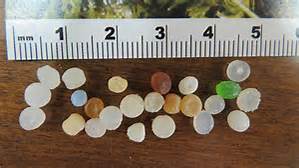
by Rick O'Connor | Sep 6, 2019
It is an amazing product actually… plastic. It can be molded into all sorts of shapes and forms. In some cases, it can be more durable than other products, it is lighter and cheaper than many. Slowly over time, we began to use more and more of it. I remember as a kid in the ‘60s Tupperware products were common. Cups and bowls with resealable lids. Coffee cups followed, then 2-Liter coke bottles, to the common water bottle we see today. As I look around the room, I am in right now there are plastic pens, picture frames, suntan lotion bottles, power cords, rain jacket, the cover and keyboard of this laptop. Plastic is part of our lives.
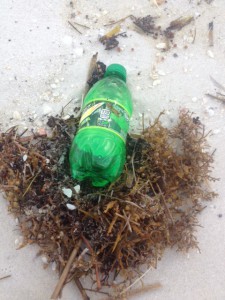
A variety of plastics ends up in the Gulf. Each is a potential problem for marine life. Photo: Rick O’Connor
Unfortunately, being relatively inexpensive, it is also easily disposed of. Many forms of plastic are one-time use. In some cases, we purchase and discard them without really using them – plastic wrap covering fruit, or the famous plastic grocery bags. Most of this discarded plastic eventually finds its way into the environment. Data from the 2017 International Coastal Clean Up, showed that globally all the top 10 items collected were plastic. Most of it was cigarette butts and items related to food and drink. Even with all the press, the number of plastic grocery bags collected actually increased. One study conducted in 2015 estimated the amount of plastic in our oceans would be enough to fill 5 plastic grocery bags for each foot of shoreline of the 192 countries they surveyed.
There is a lot of plastic out there. One researcher commented… it’s all still there. Some have estimated that plastic takes about 600 years to completely break down. Plastic items degrade while exposed to sun, sand, and saltwater. But they never go away. They become smaller and smaller to a point where you cannot even see them anymore – these are called MICROPLASTICS.
Microplastics are defined as any plastic items 5mm or smaller in diameter. Most plastics float, and most microplastics float as well, but pieces of microplastics have been found throughout the water column and even in the deep-sea sediments. They come in two forms; primary and secondary.

“Nurdle” are primary microplastics that are produced to stuff toys and can be melt down to produce other products.
Photo: Maia McGuire
Primary microplastics are plastics that are produced at these small sizes. All plastic products begin as small beads called nurdles. Nurdles are produced and shipped to manufacturing centers where they are melted down and placed into forms which produce car bumpers, notebook covers, and water bottles. Many of these nurdles are shipped via containers and spills occur. Other primary microplastics are microbeads. These are used in shampoo, toothpaste, and other products to make them sparkle, or add color. As they are washed down our sinks and showers, they eventually make their way into the environment. Sewage treatment facilities are designed to remove them.
Secondary microplastics are those they were originally macroplastics and have been broken down by the elements. Plastic fragments and fibers are two of the more common forms of secondary microplastics. These micro-fibers make up 70-80% of the microplastics volunteers find in Florida waters. Many of these fibers come from our clothing, from cigarette butts, and other sources.
Are these microplastics causing a problem?
It is hard to say whether they have caused the decline in populations of any group of marine organisms, but we do know they are absorbing them. Studies have found microscopic plankton have ingested them, and some have ceased to feed until they pass them, if they do pass them. There has been concerned with the leaching of certain products in plastic to make them more flexible in bottled water. These products have been found in both plankton and in whales.
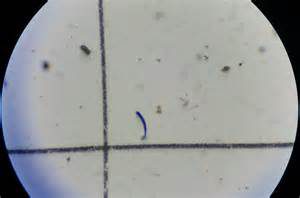
The most common form of microplastic are fibers.
Photo: UF IFAS St. Johns County
Another problem are the toxic compounds already in seawater. Compounds such as PCBs, PAHs, and DDT. It has been found that these compounds adhere to microplastics. Thus, if marine organisms consume (or accidentally ingest) these microplastics, the concentrations of these toxins are higher than they would be if the microplastics were not present.
Studies have shown:
– Pacific oysters had decreased egg production and sperm motility, fewer larvae survived, and the survivors grew more slowly than those in the control population.
– Plastic leachate impaired development of brown mussel larvae.
– Shore crabs fed microplastics consumed less food over time.
A recent summer research project at the University of West Florida found microplastics within the gut and tissues of all seafood products purchased in local seafood markets. And recently a study of human stool samples from volunteers in Europe and Japan found microplastics in us. Again, we are not sure of the impact on our health from this, but they are there.
So, what do we do?
One idea is to remove these microplastics from the ocean – skimming or filtering somehow. As you might guess, this also removes much needed phytoplankton and zooplankton.
There is the ole “Recycle, Reuse, Reduce” idea we learned when we were in school. Unfortunately, recycling plastic has not been working well. Being a petroleum product, the price of oil can dictate the price of recycled plastic. With low oil prices comes low recycling profits. In many cases it can be cheaper to produce and purchase new plastic products. Also, unlike glass, plastic can only be recycled so many times.
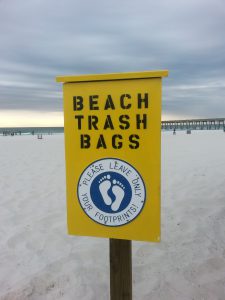
Boxes providing garbage bags and disposal.
Photo: Pensacola Beach Advocates
Reuse and reduce may be the better options. If you must purchase plastic items, try to reuse them. In many cases this is difficult and the reduce method is the better option. Reduce the purchase of plastic items such as your own drinking container instead of using the one-time plastic cup at meetings or events. And of course, reusable grocery bags. You will have to think on how to reduce some items, but most can be done.
There are numerous more suggestions, and more information, on Dr. Maia McGuire’s Flagler County Extension website – http://sfyl.ifas.ufl.edu/flagler/marine-and-coastal/microplastics/.
Help make others more aware of microplastics during Microplastics Awareness Month.

by Rick O'Connor | May 17, 2019
I am writing about this animal because, though it is rare to see them, our terrapin volunteers saw two this past week; and maybe you will too.
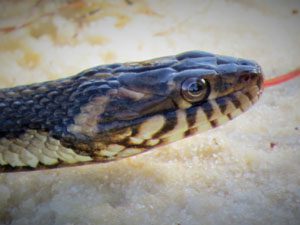
The round pupil and vertical jaw stripes indicate this is the nonvenomous Nerodia. Photo: Carole Tebay
The Gulf salt marsh snake is one of those, like the eastern coral snake, that is actually common – just rare to see. It is rare to see because (a) it lives in muddy salt marshes, where we rarely venture, and (b) it is mostly nocturnal – and even fewer of us venture into muddy salt marshes at night.
It is in the genus Nerodia, which includes the common water snakes like the banded water snake (Nerodia fasicata). It is a harmless nonvenomous snake. However, because of where it lives, it is often confused with a cottonmouth and is killed. A common name for this snake in Alabama is “bay moccasin”.
Their name is Nerodia clarkii, but it is a subspecies of this group – so the actual name is Nerodia clarkii clarkii. The other two subspecies are found in Florida. The Mangrove salt marsh snake (Nerodia clarkii compressicauda) is found from central Gulf coast of Florida, around the Keys to Indian River County on the Atlantic coast. The Atlantic salt marsh snake (Nerodia clarkii taeniata) has a very small range. Originally reported in Volusia, Brevard, and Indian River counties – due to the northern expansion of mangroves, it is believed to only be in Volusia County now. It is listed as THREATENED both federally and with the state. Our Gulf salt marsh snake is found from central Florida to Texas.
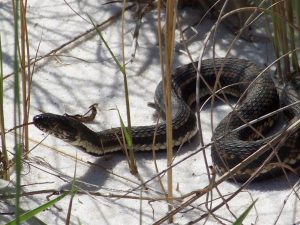
The nonvenomous Gulf Salt marsh Snake.
Photo: Molly O’Connor
It is a relatively small snake, only reaching a length of around 15-20 inches, though some have been reported at 30 inches. They possess two long yellowish-tan stripes running laterally the length of its body, the only species of Nerodia to do so. Again, they move at night feeding on small crabs, shrimp, frogs, and small fish. During daylight hours they hide beneath the wrack or other vegetation avoiding herons, egrets, and larger blue crabs. Lacking the needed glands, they cannot desalinate seawater the way sea turtles and terrapins can. All of their freshwater comes from their food and from rainfall.
They breed in the spring, possibly why we are seeing them now, and give live birth to about 10 young in midsummer. They are of moderate conservation concern in Alabama due to the loss of salt marsh. The loss of salt marsh habitat and rise of sea level are their major concerns at this point.
I do need to warn you, though it is a small, nonvenomous snake, they will bite. If bitten, soap and water will do the job. For me, and others, it is actually exciting to see them because of their reclusive nature. If you see one while exploring our intracoastal waters, know that you are not in any danger but rather lucky to see this “mystery of the marsh”.
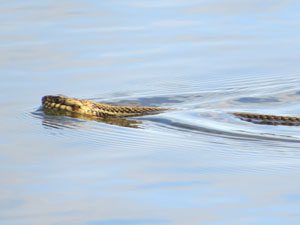
The Gulf Salt Marsh Snake swimming in a local marsh.
Photo: Carole Tebay
References
Gulf Salt Marsh Snake – Texas Parks and Recreation – https://tpwd.texas.gov/huntwild/wild/species/gulfsnake/.
iNaturalist – https://www.inaturalist.org/guide_taxa/776612.
Outdoor Alabama – Alabama Department of Conservation and Natural Resources – https://www.outdooralabama.com/non-venomous-snakes/gulf-saltmarsh-snake.
Atlantic Salt Marsh Snake – N.c.taeniata – U.S. Fish and Wildlife – https://www.fws.gov/northflorida/Species-Accounts/Atl-Salt-Marsh-Snake-2005.htm.
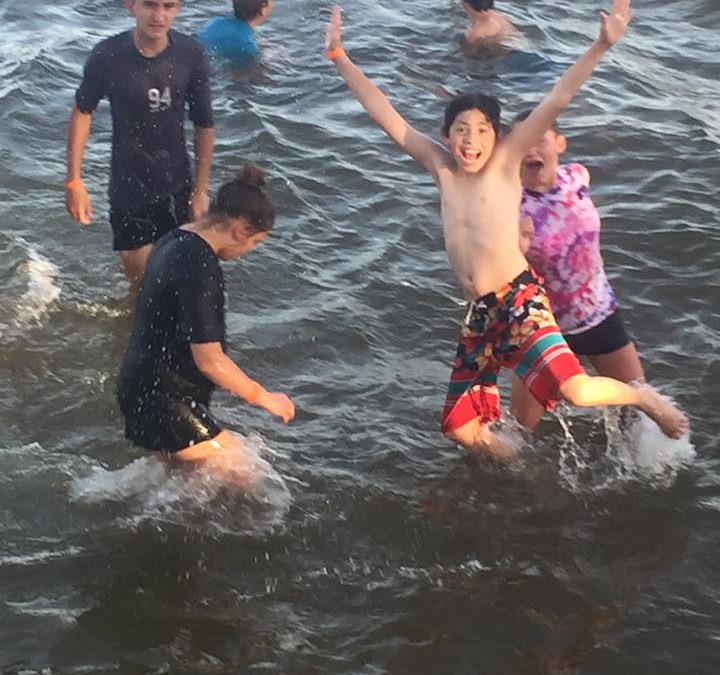
by Rick O'Connor | May 3, 2019
BY: ARIEL BLANTON, RESIDENT DIRECTOR 4-H CAMP TIMPOOCHEE
Have a love for exploring the mysteries beneath the ocean’s surface? Join us this summer for one of 4-H Camp Timpoochee’s Marine Camps! These weeks are full of aquatic learning and other fun activities such as snorkeling, swimming, recreational games, campfires, camp dance, evening activities and more. Sport-fishing sessions will help youth learn about local fish and how to catch them. Marine education activities will be lead by specialists with the University of Florida’s Sea Grant Program and State 4-H Staff, making this week an exciting and hands on outdoor adventure.
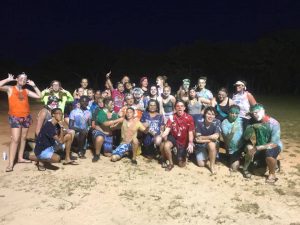
Camp Timpoochee Counselors make summer camp a blast.
Photo: Ariel Blanton
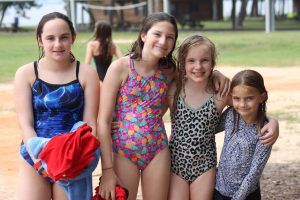
Friends you make at camp, you make for life.
Photo: Ariel Blanton
4-H Camp Timpoochee is located on the Choctawhatchee Bay in Niceville, Florida. This premium location offers campers a first-hand experience with Florida’s marine environment from above and below the waterline. You don’t want to miss out one on this camp and spots are filling fast! Our Junior Marine Camps (youth ages 8-13) are being offered July 15-19, 2019 and July 22-26, 2019. Our Senior Marine Camp (ages 14-17) is being offered June 24-28, 2019. To find out more information or to register, visit our website at http://florida4h.org/camps_/specialty-camps/marine/. We hope to see you this summer!
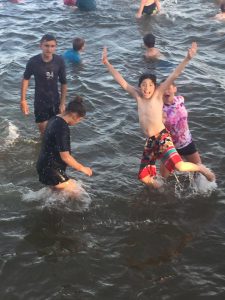
The joys of summer camp!
Photo: Ariel Blanton
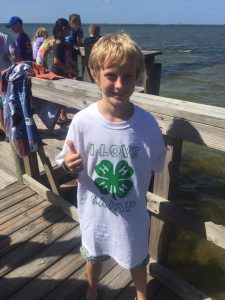
Can’t get enough fishing
Photo: Ariel Blanton
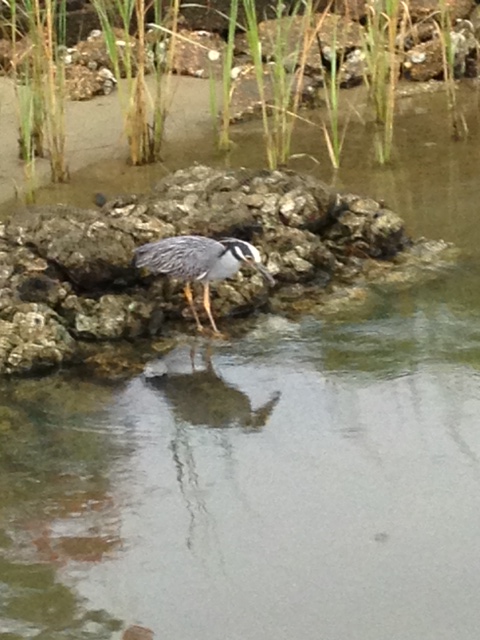
by Rick O'Connor | Apr 18, 2019
Oysters are like snakes… you either like them or you hate them. You rarely hear someone say – “yea, their okay”. It’s either I can’t get enough of them, or they are the most disgusting thing in the sea.
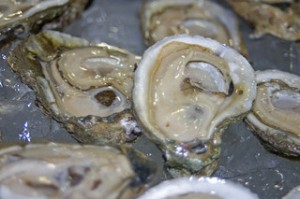
Courtesy of Florida Sea Grant
That said, they are part of our culture. Growing up here in the Florida panhandle, there were oyster houses everywhere. They are as common on menus as French fries or coleslaw. Some like them raw, some like them in gumbo or stews, others are fried oyster fans. But whether you eat them or not, you are aware of them. They are part of being in the northern Gulf of Mexico.
In recent decades the historic oyster beds that supported so many families over the years have declined in production. There are a variety of stressors triggering this. Increased sedimentation, decreased salinity, overharvesting, not returning old shell to produce new reefs, and many more. The capitol of northwest Florida’s oyster coast is Apalachicola. Many are aware of the decline of harvest there. Certainly, impacted by the “water wars” between our state and Georgia, there are other reasons why this fishery has declined. I had a recent conversation with a local in Apalachicola who mentioned they had one of their worst harvest on record this past year. Things are really bad there.

An oysterman uses his 11 foot long tongs to collect oysters from the bottom of Apalachicola Bay
Photo: Sea Grant
Despite the loss of oysters and oyster habitat, there has not been a decline in the demand for them at local restaurants. There have been efforts by Florida Sea Grant and others to help restore the historic beds, improve water quality, and assist some with the culture of oysters in the panhandle.
Enter the Bream Fisherman’s Association of Pensacola.
This group has been together for a long time and have worked hard to educate and monitor our local waterways. In 2018 they worked with a local oyster grower and the University of West Florida’s Center for Environmental Diagnostics and Bioremediation to develop an oyster garden project called Project Oyster Pensacola. Volunteers were recruited to purchase needed supplies and grow young oysters in cages hanging from their docks. Participants lived on Perdido, Blackwater, East, and Escambia Bays. Bayous Texar, and Grande. As well as Big Lagoon and Santa Rosa Sound. The small, young oysters (spat) were provided by the Pensacola Bay Oyster Company. The volunteers would measure spat growth over an eight-month period beginning in the spring of 2018. In addition, they collected data on temperature, salinity, and dissolved oxygen at their location.
After the first year, the data suggests where the salinity was higher, the oysters grew better. Actually, low salinity proved to be lethal to many of them. This is a bit concerning when considering the increase rainfall our community has witnessed over the last two years. Despite an interest in doing so, the volunteers were not allowed to keep their oysters for consumption. Permits required that the oysters be placed on permitted living shoreline projects throughout the Pensacola Bay area.

Oyster bags used in a bulkhead restoration project.
Photo: Florida Department of Environmental Protection
We all know how important oysters are to the commercial seafood industry, but it turns out they are as important to the overall health to the bays ecology. A single oyster has been reported to filter as much as 50 gallons of seawater an hour. This removes sediments and provides improved water clarity for the growth of seagrasses. It has been estimated that seagrasses are vital to at least 80% of the commercially important seafood species. It is well known that seagrasses and salt marshes are full of life. However, studies show that biodiversity and biological production are actually higher in oyster reefs. Again, supporting a booming local recreational fishing industry.
This project proved to be very interesting in it’s first year. BFA will be publishing a final report soon and plan to do a second round. For the oyster lovers in the area, increasing local oysters would be nothing short of wonderful.

by Sheila Dunning | Apr 18, 2019

Young Longleaf Pine
All of Florida’s ecosystems contain pine trees. There are seven native species in the state; Sand, Slash, Spruce, Shortleaf, Loblolly, Longleaf, and Pond. Each species grows best in its particular environment. Pines are highly important to wildlife habitats as food and shelter. Several species are equally valuable to Florida’s economy. Slash, Loblolly, and Longleaf are cultivated and managed to provide useful products such as paper, industrial chemicals, and lumber. All pines are evergreens, meaning they keep foliage year-round. The leaves emerge from the axil of each scale leaf into long slender needles clustered together in bundles. Needles are produced at the growing tips of each branch and remain on the tree for several years before turning reddish-brown and falling off. The bundles are referred to as “fascicles”. The length and number of needles in each fascicle is one way to help identify the different pine species.
A handy rule of thumb is that pines starting with “S” have needles in twos, while pines starting with “L” have needles in threes. And slash pine, which starts with “SL” has needles in twos and threes. The pond pine is also a three-needled fascicle. Pay attention to their length and the number that are held in a fascicle. Because the numbers per fascicle may vary, be sure to check several fascicles to get an overall sense for the plant! Longleaf has the longest needle, measuring over 10 inches. While sand pine has the shortest needles at around 2 inches in length. Pine cones are also a means for identification. Typically the longer the needle, the bigger the cone. But, they also vary in attachment and “spinyness’.

Cone of Loblolly Pine, attached directly to the stem
The outer (dorsal) surface of each seed cone scale has a diamond-shaped bulge, or “umbo,” formed by the first year’s growth. The umbo may or may not be armored with a “prickle,” a sharp point but not quite a spine or thorn, at the tip. As the seed cone continues to grow and expand, the exposed area at the end of each scale grows as well. The larger diamond-shaped area around the umbo, formed in the second year of growth, is called the “apophysis.” The shapes of the prickle, umbo, and apophysis can be helpful in identification. The male and female cones are separate structures, but both are present on the same plant. Pollen is produced by male cones and is carried by the wind to female cones where it fertilizes the ovules. Seeds develop and mature inside the female cones (also called the seed cones) for two years, protected by a series of tightly overlapping woody scales. Some pines open their seed cones after two years to release the seeds, while other pines continue to keep their cones tightly closed past maturity and release seeds in response to the heat of a forest fire.
To learn more about Florida’s pines and helpful hint on identification go to:
http://edis.ifas.ufl.edu/pdffiles/fr/fr00300.pdf

by Ray Bodrey | Apr 17, 2019
Soon, two important ecological surveys will begin in Gulf County, concerning both diamondback terrapins and mangroves.
Florida is home to five subspecies of diamondback terrapin, three of which occur exclusively in Florida. Diamondback terrapins live in coastal marshes, tidal creeks, mangroves, and other brackish or estuarine habitats. However, the diamondback terrapin is currently listed as a Species of Greatest Conservation Need (SGCN).
Diamondback terrapin populations, unfortunately, are nationally in decline. Human activities, such as pollution, land development and crabbing without by-catch reduction devices are often reasons for the decline, but decades ago they were almost hunted to extinction for their tasty meat. The recent decline has raised concern of not only federal agencies, but also organizations and community groups on the state and local levels. Diamondback Terrapin range is thought to have once been all of coastal Florida, including the Keys.

Figure 1: Diamondback Terrapin.
Credit: Rick O’Connor, UF/IFAS Extension & Florida Sea Grant, Escambia County.
Mangroves, a shoreline plant species of south Florida, are migrating north and are now being found in the Panhandle. Both red and black mangroves have been found in St. Joseph Bay. Mangroves establishment could be an important key to a healthy bay ecosystem, as a factor in shoreline restoration and critical aquatic life habitat.
Currently there is a significant data gap for both diamondback terrapin and mangrove populations. Therefore, there is a great need to conduct assessments to learn more about their geographic distribution.

Figure 2. Black Mangrove in St. Joseph Bay.
Credit: Ray Bodrey, UF/IFAS Extension & Florida Sea Grant, Gulf County.
The Forgotten Coast Sea Turtle Center is partnering with UF/IFAS Extension & Florida Sea Grant to assist in surveying and monitoring diamondback terrapins and mangroves in St. Joseph Bay, and we need your help! UF/IFAS Extension & Florida Sea Grant Agent’s Rick O’Connor and Ray Bodrey are providing a training workshop for volunteers and coordinating surveys for St. Joseph Bay. Terrapin surveys require visiting an estuarine location where terrapin nesting sites and mangrove plants are highly probable. Volunteers will visit their assigned locations at least once a week during the months of May and June and complete data sheets for each trip. Each survey takes about two hours, and some locations may require a kayak to reach.
If you are interested in volunteering for these important projects, we will hold a training session on Monday, April 22nd at 1:00 p.m. ET at the Forgotten Coast Sea Turtle Center (located at 1001 10th Street, Port St. Joe).
For more information, please contact:
Ray Bodrey, UF/IFAS Extension Gulf County, Extension Director
rbodrey@ufl.edu
(850) 639-3200
UF/IFAS Extension is an Equal Opportunity Institution.
























